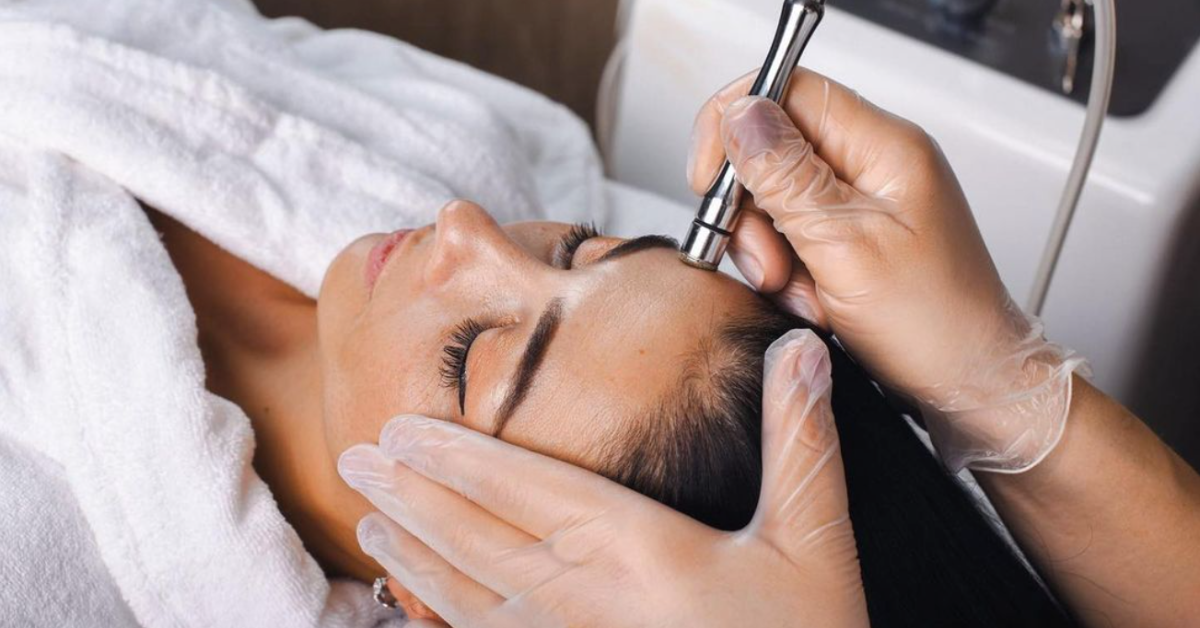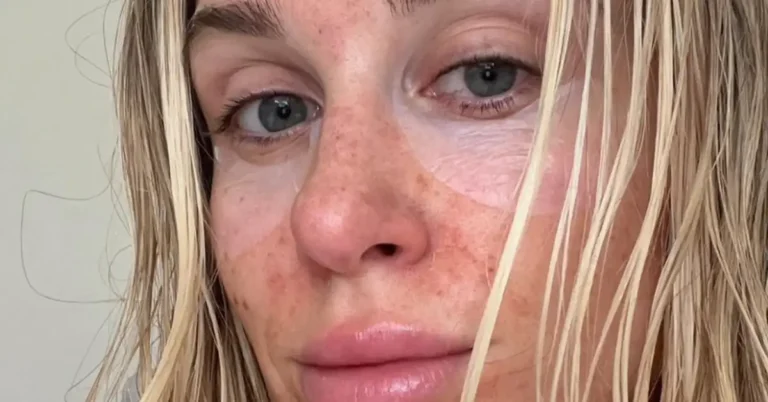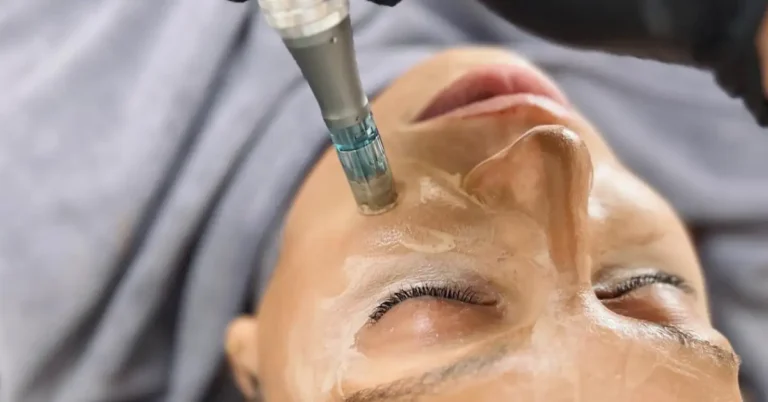Discover the secret to achieving your most glowing and vibrant skin to date! In the expansive world of skincare, filled with numerous options, dermaplaning and microdermabrasion rise above as two prominent methods. Both offer the ultimate in achieving silky, radiant skin.
But as you navigate this beauty landscape, the question looms large: which is truly the champion for your unique skin needs? Join us on an illuminating journey into the heart of dermaplaning vs. microdermabrasion, where we unveil the secrets to unlocking your skin’s full potential.
Get ready to make an empowered choice that will redefine your beauty routine and lead you to a luminous complexion you’ll cherish.
Table of Contents
Dermaplaning vs Microdermabrasion
Dermaplaning is a non-invasive treatment that involves using a scalpel to gently remove dead skin cells and peach fuzz from the surface of the skin. This exfoliating treatment can help improve the texture and tone of the skin, leaving it looking brighter and smoother.
On the other hand, microdermabrasion is a minimally invasive treatment that uses tiny crystals or a diamond-tipped wand to exfoliate the skin and remove dead skin cells. This treatment can help reduce the appearance of fine lines, wrinkles, and acne scars.
While both dermaplaning and microdermabrasion can help improve the overall appearance of the skin, they have some key differences. Dermaplaning is better suited for dry or sensitive skin, while microdermabrasion may be a better option for those with oily or acne-prone skin.
Additionally, dermaplaning can help remove peach fuzz and unwanted facial hair, while microdermabrasion focuses more on exfoliating the skin.
Understanding Dermaplaning
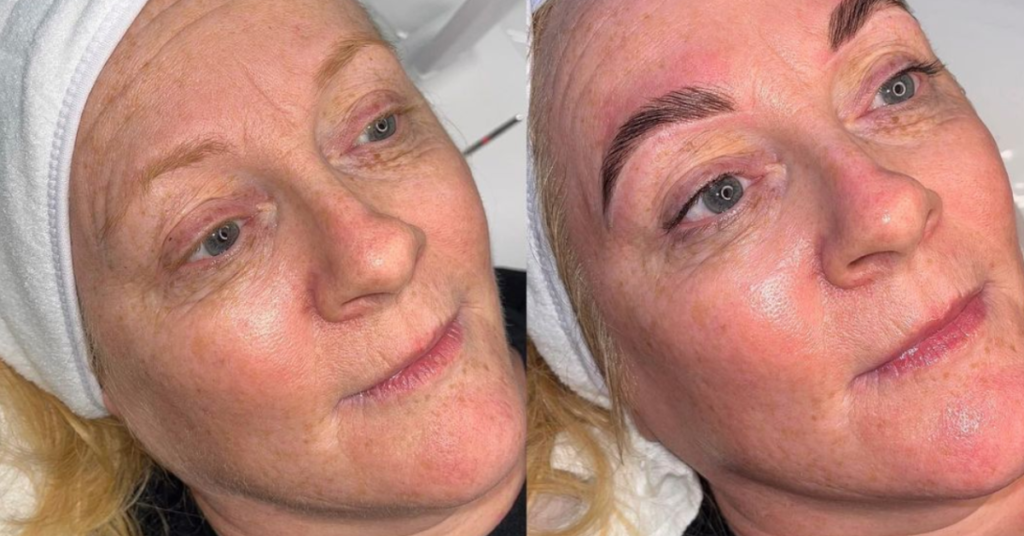
As someone who has struggled with acne scars and uneven skin texture, I have tried many different treatments to improve the appearance of my skin. One of the most effective treatments I have found is dermaplaning.
Dermaplaning is a minimally invasive cosmetic procedure that involves using a small, sharp, scalpel-like instrument to remove the top layers of dead skin cells and vellus hair (peach fuzz) from the face. This treatment is often compared to microdermabrasion, but there are some key differences between the two.
One of the main benefits of dermaplaning is that it provides immediate results. After just one session, my skin looked brighter, smoother, and more even. Plus, because it removes the top layers of dead skin cells, it allows for better absorption of skincare products and can help reduce the appearance of fine lines and wrinkles.
Another advantage of dermaplaning is that it is safe for all skin types, including sensitive skin. Unlike some other treatments, dermaplaning does not use any harsh chemicals or abrasive crystals that can irritate the skin.
Pro Tip: To get the most out of your dermaplaning treatment, it’s important to find an experienced and licensed skincare professional who can perform the procedure safely and effectively.
Understanding Microdermabrasion
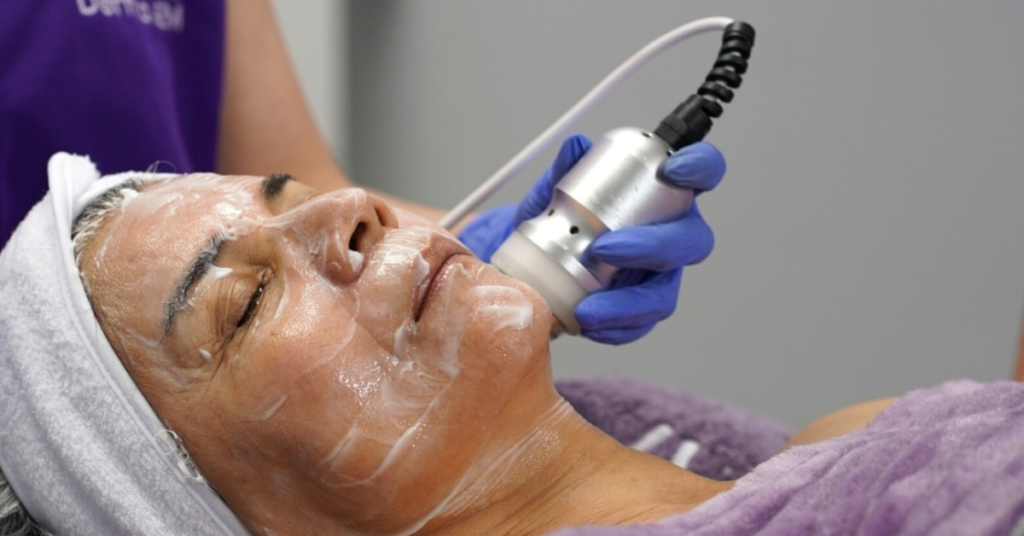
As someone who has tried both dermaplaning and microdermabrasion, I can confidently say that microdermabrasion is a great option for those looking for a non-invasive skin resurfacing treatment.
Microdermabrasion is a mechanical exfoliation technique that uses either crystals or a diamond-tipped wand to remove the outermost layer of dead skin cells. This process promotes cellular turnover and collagen production, resulting in smoother, brighter, and more youthful-looking skin.
One of the major advantages of microdermabrasion is that it can be used on all skin types, including sensitive skin. It is also a quick and painless procedure that does not require any downtime.
During the procedure, a licensed aesthetician or dermatologist will use a handheld device to gently exfoliate the skin. The entire process typically takes around 30 minutes to an hour, depending on the size of the treatment area.
My Advice: Before scheduling a microdermabrasion appointment, be sure to avoid using any topical retinoids or exfoliants for at least a week prior to the treatment. This will help minimize the risk of skin irritation or sensitivity.
Comparing Dermaplaning and Microdermabrasion
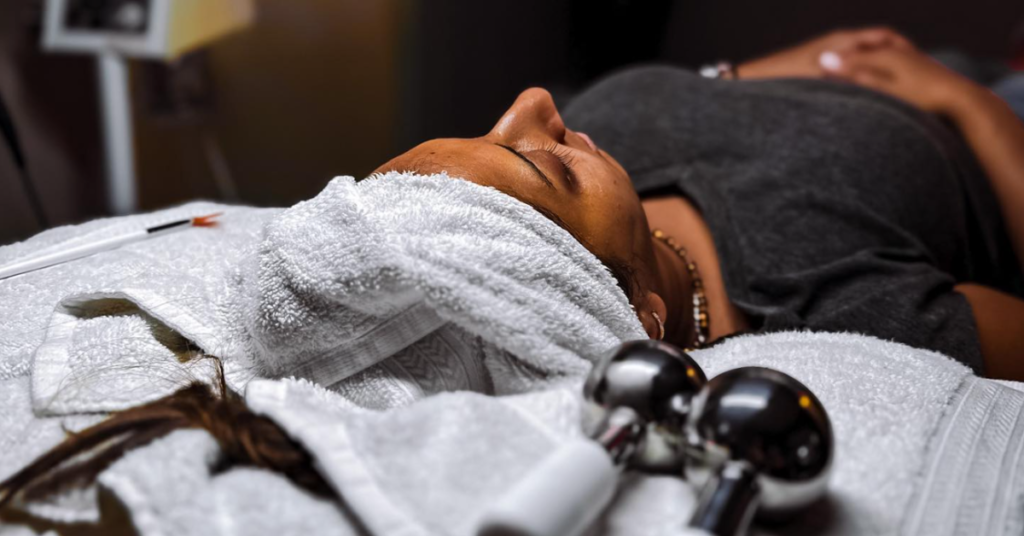
When it comes to skin rejuvenation treatments, dermaplaning and microdermabrasion are two of the most popular options. Both procedures aim to exfoliate the skin, remove dead skin cells, and improve skin texture and tone. However, there are some key differences between the two treatments that are worth considering when deciding which one is right for you.
Procedure
Dermaplaning involves using a small, sterile blade to gently scrape away the top layer of dead skin cells and fine vellus hair (peach fuzz) from the face. The procedure is painless and typically takes around 30 minutes to complete.
On the other hand, microdermabrasion uses a handheld device that sprays tiny crystals onto the skin to exfoliate the outermost layer. The procedure is also painless and takes around 30-60 minutes to complete.
| Dermaplaning | Microdermabrasion |
|---|---|
| Uses a small blade to gently scrape away dead skin cells and peach fuzz | Uses a handheld device to spray tiny crystals onto the skin |
| Painless procedure | Painless procedure |
| Takes around 30 minutes to complete | Takes around 30-60 minutes to complete |
Results
Both dermaplaning and microdermabrasion can improve the overall appearance of the skin by reducing the appearance of fine lines, wrinkles, and acne scars. However, dermaplaning is better suited for those with dry or sensitive skin, as it is a gentler procedure that does not use any harsh chemicals.
Microdermabrasion, on the other hand, is better suited for those with oily or acne-prone skin, as it can help to unclog pores and reduce the appearance of acne.
| Dermaplaning | Microdermabrasion |
|---|---|
| Improves overall appearance of skin | Improves overall appearance of skin |
| Better suited for dry or sensitive skin | Better suited for oily or acne-prone skin |
| Does not use any harsh chemicals | Can help to unclog pores and reduce the appearance of acne |
Side Effects
Both dermaplaning and microdermabrasion are generally safe procedures with few side effects. However, some people may experience redness, mild swelling, or temporary sensitivity to the sun after the procedure. It is important to follow the aftercare instructions provided by your skincare professional to minimize any potential side effects.
| Dermaplaning | Microdermabrasion |
|---|---|
| Generally safe with few side effects | Generally safe with few side effects |
| May cause temporary redness, swelling, or sensitivity to the sun | May cause temporary redness, swelling, or sensitivity to the sun |
Cost
The cost of dermaplaning vs microdermabrasion can vary depending on your location, the skincare professional you choose, and the number of sessions you need. In general, dermaplaning costs between $75 and $250 per session, while microdermabrasion costs between $75 and $200 on average.
| Dermaplaning | Microdermabrasion |
|---|---|
| Costs between $75 and $250 per session 💵 | Costs between $75 and $200 on average 💵 |
In my personal experience, I have found that both dermaplaning and microdermabrasion are effective treatments for improving the overall appearance of my skin. However, I prefer dermaplaning because it is a gentler procedure that does not use any harsh chemicals.
Choosing Between Dermaplaning and Microdermabrasion

When it comes to skin treatments, there are many options available. Two popular treatments are dermaplaning and microdermabrasion. Both treatments aim to exfoliate the skin, but they differ in their methods and outcomes. In this section, I will discuss the differences between dermaplaning and microdermabrasion and how to choose between them.
In my personal experience, I have found that dermaplaning is better suited for those with dry or sensitive skin, while microdermabrasion is better for those with oily or acne-prone skin.
Dermaplaning uses a scalpel-like tool to remove dead skin cells and vellus hair, leaving the skin smooth and bright. Microdermabrasion, on the other hand, uses a machine to spray fine crystals onto the skin and then vacuums them up, removing dead skin cells and unclogging pores.
One pro tip to keep in mind when choosing between these treatments is to consider your skin concerns. If you have fine lines, wrinkles, or acne scars, microdermabrasion may be the better choice.
If you have dry or sensitive skin, dermaplaning may be the better choice. However, some providers may combine both treatments to take advantage of each treatment’s unique benefits.
Here is a table summarizing the main differences between dermaplaning and microdermabrasion:
| Dermaplaning | Microdermabrasion |
|---|---|
| Uses a scalpel-like tool to remove dead skin cells and vellus hair | Uses a machine to spray fine crystals onto the skin and then vacuums them up |
| Leaves the skin smooth and bright | Removes dead skin cells and unclogs pores |
| Better suited for those with dry or sensitive skin | Better suited for those with oily or acne-prone skin |
| May be combined with other treatments | May be combined with other treatments |
Ultimately, the choice between dermaplaning and microdermabrasion will depend on your specific skin concerns and needs. It is important to consult with a skincare professional to determine which treatment is right for you.
Benefits of Dermaplaning
As someone who has tried both dermaplaning and microdermabrasion, I can confidently say that dermaplaning has a unique set of benefits that make it worth considering. Here are some of the benefits of dermaplaning:

- Smooths skin texture: Dermaplaning removes the outermost layer of dead skin cells and peach fuzz, which can leave your skin feeling incredibly smooth and soft. I always notice a significant improvement in the texture of my skin after a dermaplaning treatment.
- Reduces the appearance of fine lines and wrinkles: By exfoliating the skin and stimulating collagen production, dermaplaning can help reduce the appearance of fine lines and wrinkles. While this benefit is also true for microdermabrasion, I find that dermaplaning is gentler on my skin and doesn’t leave me with any redness or irritation.
- Improves product absorption: After a dermaplaning treatment, your skin is better able to absorb skincare products. This means that your moisturizer, serum, or other products will be more effective at hydrating and nourishing your skin.
- Brightens skin tone: Dermaplaning can help to remove dead skin cells and improve circulation, which can leave your skin looking brighter and more radiant.
- Safe for all skin types: Unlike some other exfoliating treatments, dermaplaning is safe for all skin types, including sensitive skin. However, if you have active acne or other skin conditions, it’s always best to consult with a dermatologist before trying any new treatments.
Pro Tip: To get the most out of your dermaplaning treatment, make sure to keep your skin hydrated and protected from the sun. Use a gentle cleanser, moisturizer, and sunscreen to keep your skin healthy and glowing.
Benefits of Microdermabrasion
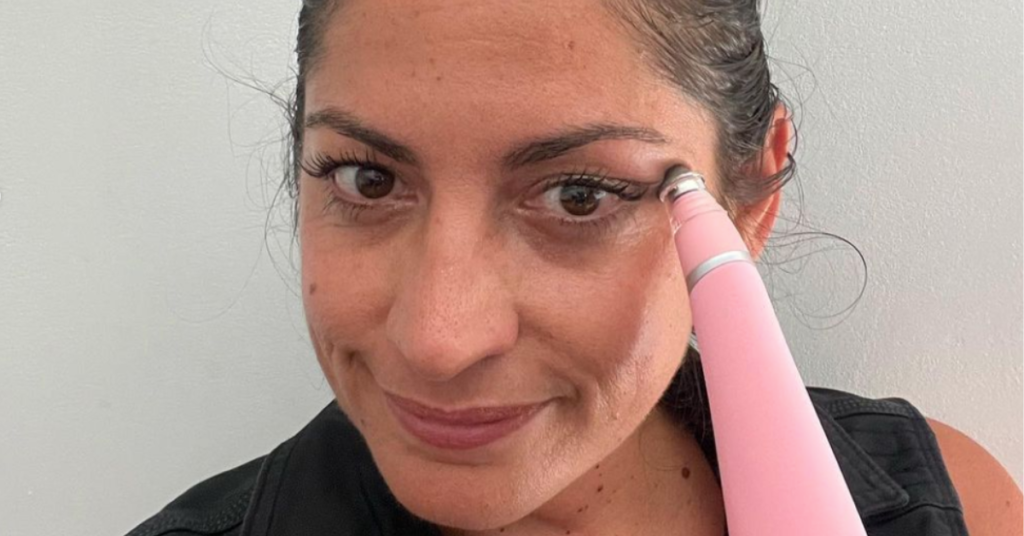
As someone who has tried both dermaplaning and microdermabrasion, I can confidently say that microdermabrasion has some unique benefits that make it a great option for certain skin types and concerns.
Firstly, microdermabrasion is a great option for those with acne-prone skin. The exfoliation process helps to unclog pores and remove dead skin cells, which can help to prevent future breakouts. Additionally, the treatment can help to reduce the appearance of acne scars, making it a great option for those who struggle with post-acne hyperpigmentation.
Another benefit of microdermabrasion is that it can help to improve the texture and tone of the skin. The gentle exfoliation process can help to smooth out fine lines and wrinkles, and can even help to improve the appearance of sun damage and age spots.
Remember: For those considering microdermabrasion is to make sure to use a gentle, non-abrasive cleanser in the days leading up to your treatment. This will help to ensure that your skin is in the best possible condition for the treatment, and will help to minimize any potential irritation or discomfort.
Who Should Avoid Dermaplaning
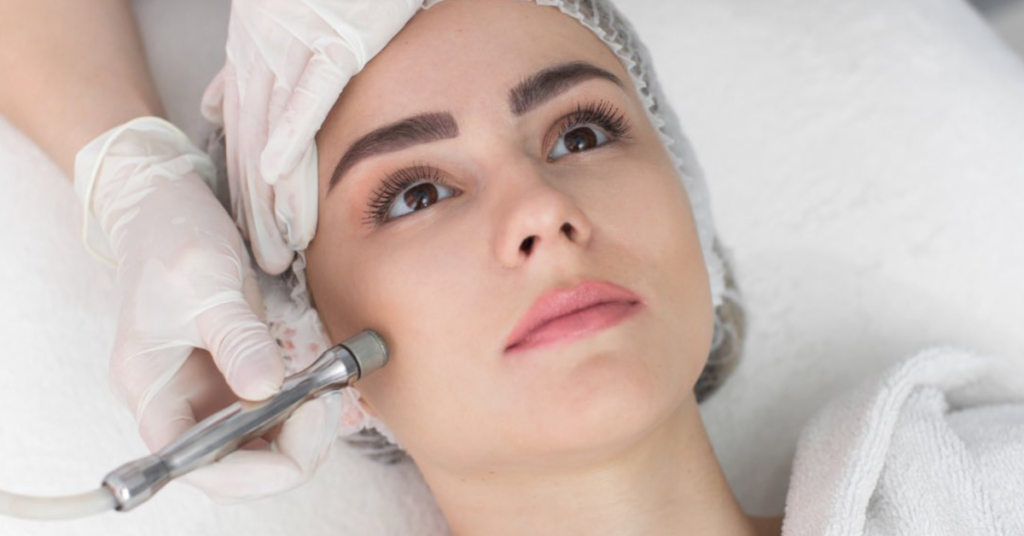
Dermaplaning is a popular cosmetic procedure that involves the use of a surgical scalpel to remove dead skin cells and fine vellus hair from the face. While it is generally considered safe for most people, there are certain individuals who should avoid dermaplaning.
As someone who has researched extensively on dermaplaning vs microdermabrasion, I can confidently say that individuals with active acne or rosacea should avoid dermaplaning. The procedure can cause irritation and increase inflammation, which can exacerbate these conditions.
Furthermore, individuals with extremely sensitive skin should also avoid dermaplaning. The procedure involves scraping a sharp blade across the skin, which can cause redness, irritation, and even minor cuts if not performed correctly. Those with a history of cold sores or fever blisters should also avoid dermaplaning, as the procedure can trigger an outbreak.
Additionally, individuals who are currently using certain skincare products or taking certain medications should avoid dermaplaning. For example, those using retinoids or acne medications may have skin that is too sensitive for dermaplaning. It is important to consult with a dermatologist or skincare professional before undergoing the procedure to ensure that it is safe for you.
Who Should Avoid Microdermabrasion
When it comes to skin treatments like microdermabrasion and dermaplaning, it’s important to consider if they are right for you. While microdermabrasion is generally safe for most people, there are certain situations where it may not be the best choice.
If you have sensitive skin, you may want to avoid microdermabrasion. The treatment involves using a device that sprays tiny crystals onto the skin to exfoliate and remove dead skin cells. While this can be effective for some people, it can also be too harsh for those with sensitive skin. The crystals can cause irritation, redness, and even breakouts.
People with certain skin conditions may also want to avoid microdermabrasion. If you have rosacea, eczema, or psoriasis, the treatment can aggravate these conditions and make them worse. It’s best to consult with a dermatologist before undergoing microdermabrasion if you have any of these conditions.
If you have active acne, you should also avoid microdermabrasion. The treatment can spread bacteria and cause further breakouts. Instead, consider dermaplaning, which is a gentler exfoliation method that uses a razor to remove dead skin cells.
Dermaplaning vs Microdermabrasion: A Recap
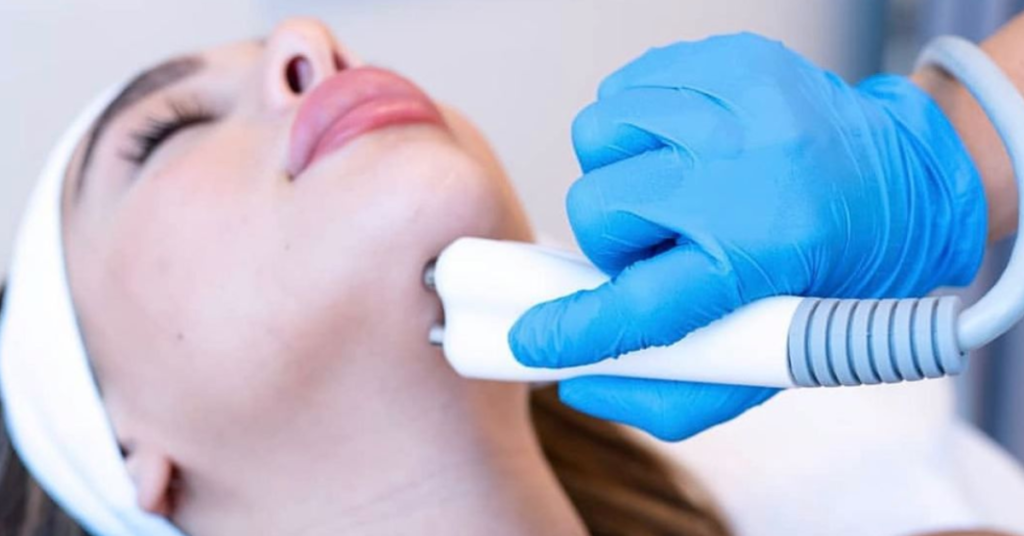
As I’ve discussed earlier, dermaplaning and microdermabrasion are two popular cosmetic procedures that can help improve the appearance of your skin. Both treatments exfoliate the skin, removing dead skin cells and promoting cell turnover to reveal smoother, brighter, and more youthful-looking skin. However, there are some differences between the two procedures that you should be aware of before deciding which one is right for you.
In terms of technique, dermaplaning involves using a surgical blade to gently scrape away dead skin cells and fine vellus hair (peach fuzz) from the surface of the skin, while microdermabrasion uses a handheld device to spray fine crystals onto the skin, which are then suctioned away along with the dead skin cells.
In terms of results, both treatments can help reduce the appearance of fine lines, wrinkles, acne scars, hyperpigmentation, and uneven skin tone. However, dermaplaning may be more effective at removing vellus hair and promoting deeper exfoliation, while microdermabrasion may be better at treating acne-prone skin and reducing the appearance of large pores.
When it comes to cost, both procedures are comparable, with dermaplaning costing between $75 and $250 per session, and microdermabrasion between $75 and $200 on average. The cost of either procedure is impacted by factors such as location, the experience of the provider, and the specific type of treatment.
To help you compare the two procedures more easily, here’s a table summarizing their key differences:
| Dermaplaning | Microdermabrasion |
|---|---|
| Uses a surgical blade to scrape away dead skin cells and peach fuzz | Uses a handheld device to spray fine crystals onto the skin, which are then suctioned away |
| May be more effective at promoting deeper exfoliation and removing vellus hair | May be better at treating acne-prone skin and reducing the appearance of large pores |
| Generally costs between $75 and $250 per session | Generally costs between $75 and $200 per session |
Personally, I’ve tried both dermaplaning and microdermabrasion and have found that both treatments have their benefits. Dermaplaning left my skin feeling incredibly smooth and soft, while microdermabrasion helped reduce the appearance of my acne scars. Ultimately, the choice between the two treatments will depend on your specific skin concerns and preferences.
FAQ
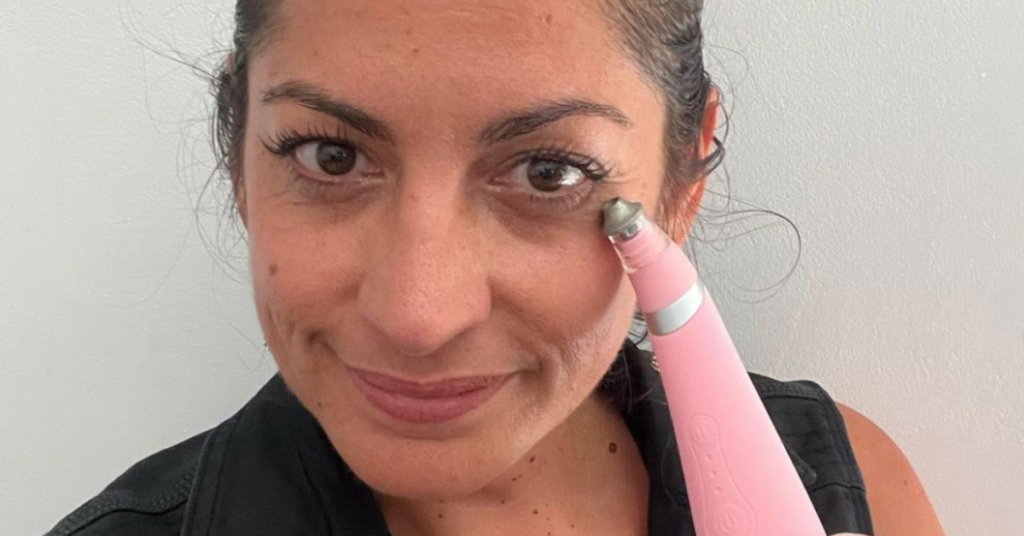
Should I get microdermabrasion or dermaplaning?
The choice between microdermabrasion and dermaplaning depends on your skincare goals. If you’re concerned about dark spots, clogged pores, and hyperpigmentation, microdermabrasion may be the better choice. However, if dryness is a primary concern, dermaplaning can be a key to success for you.
How soon after dermaplaning can I do microdermabrasion?
It’s generally advisable to wait at least 2 weeks between dermaplaning and microdermabrasion sessions. This allows your skin to recover fully and minimizes the risk of irritation or overexfoliation. Always consult with a skincare professional for personalized guidance.
Is microdermabrasion less aggressive than dermaplaning?
Microdermabrasion is indeed more aggressive and abrasive compared to dermaplaning. Consequently, it’s better suited for skin with minimal issues, as it can be harsher on sensitive or problem-prone skin. Consider your specific skincare needs when choosing between the two treatments.
Can you use vitamin C after dermaplaning?
Yes, you can use vitamin C serum after dermaplaning, but it’s best to wait for a few hours to allow your skin to recover fully. Vitamin C can be beneficial for post-dermaplaned skin as it may help with collagen production and skin brightening.
If you liked this blog article about the topic: Dermaplaning vs Microdermabrasion, don’t forget to leave us a comment down below to tell us about your experience.

